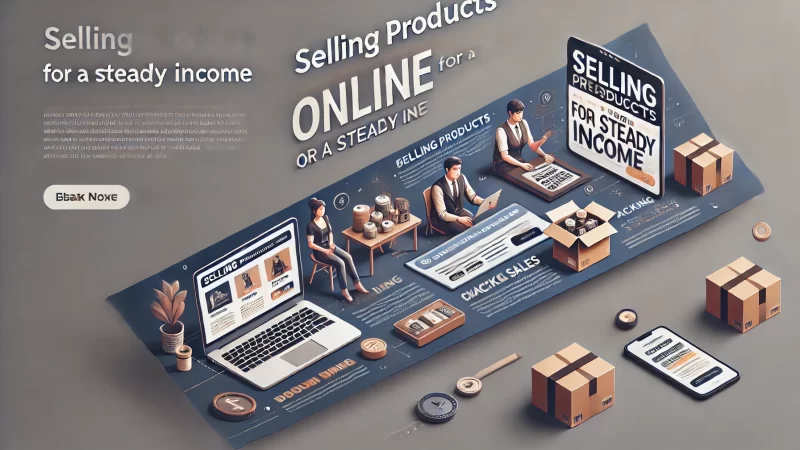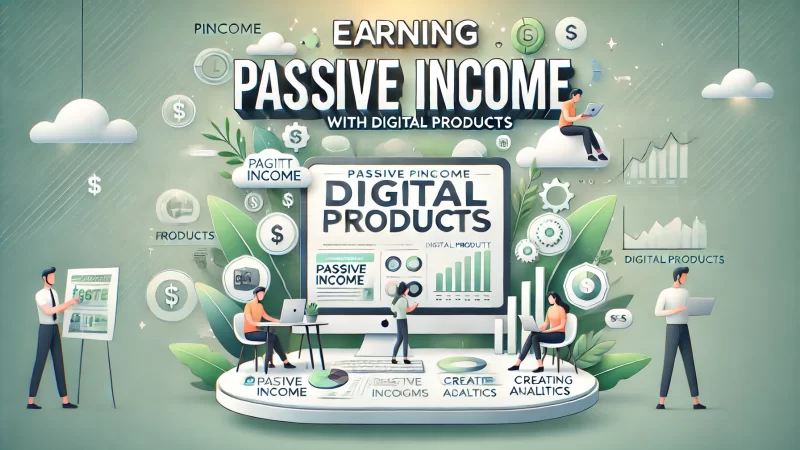Table of Contents
Are you wondering how to make money from home as a woman? With evolving work opportunities and the rise of remote options, women now have various ways to earn from home, catering to diverse skills and schedules.
In this guide, we’ll explore numerous work-from-home opportunities, practical tips to maximize income, and essential tools to succeed in a home-based career. Let’s dive into the best options to empower your journey to financial independence.
Freelancing Opportunities For Women At Home

Freelancing offers incredible flexibility and financial independence for women seeking work-from-home options. With various freelancing roles to choose from, there’s something to suit nearly any skill set. Let’s explore the most popular freelancing paths and how to get started.
Types Of Freelancing Jobs To Start From Home
Freelancing covers many fields, from writing to graphic design. I suggest identifying your core skills and aligning them with in-demand freelance roles like content writing, social media management, or graphic design. These jobs don’t require extensive resources and can be done from your home with a computer and internet connection.
For women skilled in numbers, online bookkeeping or accounting is a profitable freelancing avenue. Similarly, web development is ideal for those with technical expertise. These roles offer lucrative opportunities, especially as businesses increasingly seek remote support. Some jobs require certification, but others are open to beginners with a portfolio or strong samples.
Virtual assistance is another versatile freelancing role, ideal for organizing, scheduling, and email management tasks. If you enjoy managing tasks and providing administrative support, this option is highly flexible. Many small businesses and entrepreneurs rely on virtual assistants to keep things running smoothly.
Lastly, content creation spans blog writing, video editing, and more, fitting well for those who enjoy storytelling. Whether creating social media content or writing informative articles, content creation freelancing provides a creative outlet while offering a steady income source.
Platforms To Find Freelance Work Quickly
Freelance platforms like Upwork and Fiverr connect freelancers to clients worldwide. I recommend these platforms for newcomers, as they simplify finding work and setting up profiles. Just list your services, build a portfolio, and bid on projects to start gaining clients.
Freelancer.com is another popular choice, offering job listings across various industries. Here, women can explore different categories and apply for projects directly, making it easier to land initial work. Be sure to read each project description carefully to match your skills with the client’s requirements.
If you specialize in creative fields, consider joining platforms like Behance and Dribbble, particularly for graphic design and photography work. These platforms showcase portfolios while connecting freelancers with companies seeking specific skills. It’s a great way to gain exposure and potentially attract higher-paying clients.
For freelance writers, websites like ProBlogger and MediaBistro focus on writing and editing roles. I advise checking these platforms regularly, as they offer freelance listings specifically geared toward writers, helping you secure steady writing gigs.
Top Freelance Skills In Demand For Women
Freelancing is full of potential if you focus on developing high-demand skills. Social media management is booming, with businesses needing professionals to manage their social presence. Learning social media strategy, content scheduling, and analytics will make you competitive in this area.
Copywriting is another sought-after skill. If you enjoy crafting persuasive messages, it’s a lucrative path. Many businesses seek freelance copywriters to create website content, advertisements, and more. I believe mastering SEO copywriting can give you a significant edge here.
Graphic design is consistently in demand, especially as businesses look for logos, marketing materials, and brand visuals. Familiarize yourself with tools like Adobe Illustrator or Canva. Building design skills will open doors to more clients seeking creative freelance services.
Lastly, data analysis is valuable in freelancing, particularly with companies prioritizing data-driven decisions. Learning to interpret data and generate insights can make you indispensable in industries focused on analytics. It’s a skill that pays well and can be developed with online courses.
How To Build A Portfolio That Attracts Clients
A portfolio is key to landing freelance work, so I suggest creating a professional display of your best projects. Start by selecting work that highlights your skills and aligns with the types of jobs you’re pursuing. Include projects that reflect your strengths in specific fields, such as writing samples or design work.
If you’re new to freelancing, build a portfolio by offering services at a discount to a few clients. This will help you gain practical experience and collect work samples. Clients like to see variety, so aim to include examples showcasing different skills.
A personal website is an excellent way to showcase your portfolio. I recommend using platforms like Wix or WordPress for a simple website that looks polished. Include an “About Me” section, contact form, and a page for client testimonials to add credibility.
Don’t overlook social proof; positive client feedback enhances your portfolio. Even a few testimonials can make a big difference when clients are choosing between freelancers. Display testimonials prominently to reinforce your professionalism.
Starting A Profitable Home-Based Business

Starting a home-based business allows women to tap into their passions and skills from the comfort of their home. From crafting to consulting, there’s a wide range of opportunities for creating a successful business.
Small Business Ideas For Women From Home
I recommend starting a business that aligns with your interests. Handmade goods are always popular; for example, many women turn to Etsy to sell jewelry, crafts, or homemade candles. It’s a fun way to monetize a hobby and create unique items.
If you have consulting expertise, offering online consultations can be a profitable path. Many clients prefer virtual consultations for flexibility, and you can set up your business with minimal equipment, charging for your insights in fields like nutrition, finance, or life coaching.
For those with a teaching flair, creating online courses or offering tutoring services is a promising option. You can teach nearly any skill, from language to baking, reaching students worldwide. This business model allows for a flexible schedule and builds a reputation over time.
Another option is reselling products through dropshipping. Many women find success by choosing niche products, like eco-friendly goods, and marketing them through social media. Dropshipping saves you the hassle of holding inventory, allowing you to focus on sales.
Essential Steps To Launch A Home Business
Launching a home business begins with clear planning. I suggest starting with a business plan that outlines your product or service, target audience, and goals. Having a strong plan provides structure and helps secure any needed financing.
You’ll need a dedicated workspace, even if it’s just a corner of your room. Setting up a workspace helps you stay organized and productive. I recommend investing in basic equipment, like a reliable computer, for a seamless setup.
Setting up an online presence is essential for any home-based business. Create social media profiles and a simple website to reach your audience. These platforms allow you to connect with customers and showcase your products or services.
Build a schedule that balances work with your personal life. Many women find that setting specific work hours enhances productivity while keeping a clear boundary between work and home life, crucial for long-term success.
Legal Requirements For Home-Based Businesses
Every business has legal requirements, so it’s vital to know your obligations. Depending on your location, you may need permits or a business license to operate from home. Check local regulations to ensure you’re compliant before you start.
If you’re selling products, look into tax requirements. I suggest consulting a tax professional or using online resources to determine the correct approach. Registering for any necessary tax identification numbers keeps your business aligned with the law.
For home businesses that collect personal data, privacy laws may apply. It’s wise to create a privacy policy that informs customers about data handling practices. Adding this to your website builds trust and compliance with data protection regulations.
Consider insurance for your business. Homeowner’s insurance may not cover business-related claims, so securing a separate policy for your business is prudent. This protects you from unexpected issues and gives peace of mind.
Marketing Strategies To Grow A Home Business
Effective marketing is the lifeline of a home business. I recommend starting with social media marketing, creating engaging posts on platforms like Instagram and Facebook. Consistency in posting builds brand awareness and attracts customers.
Email marketing is another powerful tool. By building an email list, you can communicate directly with customers, promoting sales or new products. I suggest offering a small discount to encourage email sign-ups, which drives engagement.
Collaborate with other local businesses to increase reach. Partnering on promotions or hosting joint events broadens your customer base, introducing your business to a wider audience. It’s an excellent way to build visibility within your community.
Invest in search engine optimization (SEO) for your website. Proper SEO ensures your business appears in search results when customers search for related products or services, driving traffic to your site without paid advertising.
How To Make Money From Home Through Blogging

Blogging is a fantastic way to make money from home, offering flexibility, creativity, and the potential for substantial income. Whether you’re sharing expertise or exploring a passion, blogging can become a profitable business with the right strategies.
Choosing A Profitable Blog Niche
Picking the right niche is crucial to a blog’s success. I suggest focusing on topics you’re passionate about and knowledgeable in; this keeps you motivated and authentic. Health, finance, and lifestyle are often profitable niches with wide appeal.
Conducting research is essential for niche selection. Look at search volumes and trending topics to determine if there’s an audience for your blog’s focus. I recommend using tools like Google Trends to identify popular niches that align with your interests.
Once you’ve found a niche, refine it by focusing on specific subtopics. For example, instead of a general food blog, consider a niche like vegan recipes. Narrowing down makes your blog stand out in a crowded market, attracting a targeted audience.
Profitability is also key when selecting a niche. Check if your niche has affiliate products or sponsors, which can provide monetization opportunities. I believe aligning your content with profitable industries can significantly increase revenue potential.
Setting Up Your Blog For Maximum Monetization
A well-designed blog sets the stage for effective monetization. Start with a reliable hosting service and a user-friendly blog platform like WordPress, which I highly recommend for its customization options. An appealing design enhances reader engagement and trust.
Choose a domain name that reflects your niche. A memorable, professional name strengthens your brand and is easy for readers to recall. If possible, I suggest using keywords related to your topic in the domain to boost SEO from the outset.
To maximize income, consider premium ad networks and affiliate programs that suit your content. Display ads can bring steady revenue, while affiliate marketing offers commissions on recommended products. I advise researching ad placement strategies to enhance visibility.
Utilize email marketing from the start. Building an email list helps retain readers and market products directly. An effective email list can become a significant income stream by nurturing relationships and driving traffic back to your blog.
Proven Ways To Make Money Through Blogging
Affiliate marketing is one of the top ways to earn from a blog. By promoting products that fit your niche, you can earn commissions on sales made through your referral links. I recommend reviewing products honestly to build credibility with your readers.
Selling digital products like eBooks, courses, or printables is another profitable method. Readers appreciate in-depth resources, especially if you’re an authority in your niche. Digital products add passive income potential as they require minimal ongoing effort.
Sponsored posts offer payment for promoting brands or products on your blog. Collaborating with companies that align with your niche provides value to your audience and boosts earnings. Many companies look for niche bloggers with engaged audiences for promotion.
Another option is offering services based on your expertise. For instance, if you blog about graphic design, consider offering design services. It’s a great way to diversify income while establishing authority in your field, bringing both reputation and revenue.
Content Strategies To Drive Blog Traffic
Content quality is essential for attracting readers. I suggest creating well-researched, informative posts that answer common questions in your niche. This builds reader trust and keeps them coming back, a key factor for long-term success.
SEO is crucial for visibility. Using keywords strategically helps your content appear in search results, driving organic traffic. I advise optimizing titles, headers, and meta descriptions with relevant keywords, making it easier for people to find your blog.
Social media sharing broadens your reach. Platforms like Pinterest and Instagram are excellent for visual content, while Twitter and LinkedIn work well for articles. Each platform has its own strengths, so I recommend experimenting to find what works best.
Engage with your readers by responding to comments and emails. Building a community around your blog keeps readers loyal, encourages return visits, and even improves SEO. This engagement can make a notable difference in blog growth over time.
Leveraging Social Media For Income From Home

Social media offers an incredible range of opportunities for making money from home, with options to suit nearly any skill set. Whether managing accounts or creating content, social media income streams are growing rapidly in popularity.
Becoming A Social Media Manager From Home
Social media management is ideal if you’re organized and enjoy planning. It involves creating posts, scheduling content, and managing comments. I suggest starting with small businesses needing assistance, which helps build experience and a portfolio.
Communication skills are key for social media managers. You’ll often represent a brand and need to respond professionally to questions and comments. Strong communication builds trust with clients and their audiences, which can enhance business relationships.
Familiarize yourself with analytics tools. Monitoring engagement, reach, and impressions helps adjust content for better performance. Clients appreciate managers who can analyze data to optimize strategy, boosting both their brand and your reputation.
Develop a system for planning and scheduling posts. I find tools like Buffer or Hootsuite helpful, as they streamline the process and save time. Efficient planning is especially useful when managing multiple clients, helping you stay organized and productive.
How To Monetize Social Media Content
Influencer marketing is a top way to monetize. Brands pay influencers to promote products, especially those with engaged followings. I recommend reaching out to brands in your niche and creating authentic content that resonates with your audience.
Sponsored posts are also effective. You receive payment to post about products or services, making it a lucrative option if you have a loyal audience. Working with brands that align with your values keeps content authentic and appeals to your followers.
Affiliate marketing works well on social media too. Share links to products you love, earning a commission on sales made through those links. It’s important to disclose affiliations for transparency, which builds trust with your audience over time.
Another method is selling digital products directly to your audience. Whether it’s a guide, an eBook, or a course, digital products offer income without physical inventory. They also establish you as an authority, attracting even more followers.
Building A Strong Social Media Presence
Consistency is essential for social media growth. Posting regularly helps your content stay visible, boosting engagement rates. I recommend setting a schedule and sticking to it, so your followers know when to expect new content from you.
Creating quality visuals is crucial. Invest in a good camera or phone for clear photos, or use design tools like Canva to make appealing graphics. Attractive visuals grab attention, increasing the likelihood that followers will engage with your posts.
Engage with your audience actively. Responding to comments and messages makes followers feel valued, which strengthens your online community. It also boosts engagement, as platforms prioritize content that gets frequent interaction.
Cross-promote on multiple platforms. Each social media site has unique features; what works on Instagram might differ on Twitter. Exploring different platforms helps reach a broader audience, maximizing exposure and increasing potential income.
Tools And Resources For Social Media Management
Social media tools make managing accounts easier and more efficient. I recommend using scheduling tools like Later or Buffer to plan posts in advance, which keeps your content consistent without needing constant supervision.
Analytics tools like Sprout Social provide insights on performance. Tracking engagement, reach, and follower growth helps refine your strategy. Regularly reviewing these metrics allows you to adjust content and improve results.
For design, Canva and Adobe Spark are excellent resources for creating professional-looking visuals. Both platforms offer templates for everything from Instagram posts to YouTube thumbnails, making it easy to create eye-catching content.
Consider investing in automation tools for routine tasks. Tools like Zapier can automate repetitive actions, like posting updates or sending messages. Automation saves time, enabling you to focus more on content strategy and engagement.
Make Money With Home-Based Virtual Assistance

Becoming a virtual assistant is a versatile way to make money from home. It involves providing support services remotely, making it a flexible choice for women balancing work with family or other responsibilities.
Skills Required To Be A Successful Virtual Assistant
Organization and multitasking are key skills. Virtual assistants often juggle scheduling, emails, and data entry. I suggest developing a system to manage tasks effectively, as clients value assistants who can handle multiple responsibilities seamlessly.
Communication skills are essential. Since VAs often communicate with clients and their contacts, clarity and professionalism are important. Effective communication builds client trust, ensuring smooth interactions and a positive working relationship.
Technical skills boost your value. Familiarize yourself with tools like Microsoft Office, Google Workspace, and project management platforms. Proficiency in these tools improves efficiency, making you an asset to any business.
Attention to detail sets successful VAs apart. Clients appreciate accuracy, especially in handling scheduling and documentation. If you’re meticulous with details, it enhances reliability and ensures clients’ operations run smoothly.
Top Industries Hiring Virtual Assistants
E-commerce is a growing field for virtual assistants. Tasks often include order management, customer service, and inventory tracking. I find e-commerce offers steady work, as many online stores need consistent support.
Real estate is another sector hiring VAs. Responsibilities include scheduling property viewings, managing client contacts, and handling paperwork. Real estate firms value assistants who can streamline these administrative tasks, enhancing productivity.
Digital marketing agencies also rely on VAs for tasks like social media scheduling and report generation. Assisting with campaigns and data management helps agencies focus on creative work, making VAs indispensable in marketing.
Coaching and consulting services often hire VAs for client communication and appointment scheduling. Supporting these professionals allows them to concentrate on client sessions, boosting productivity for both the VA and the consultant.
Ways To Find Virtual Assistant Jobs Quickly
Freelance platforms like Upwork and Fiverr are good starting points. Setting up a profile and applying for entry-level roles helps you gain experience. I advise building client relationships early on, which can lead to ongoing work.
Networking in VA communities on Facebook or LinkedIn can yield job leads. Many groups share openings and offer guidance on freelancing. Connecting with others in the industry also helps you stay updated on potential clients.
Consider joining VA-specific job boards like Belay or Time Etc. These platforms connect virtual assistants with businesses directly, providing a streamlined way to find work. Many VAs have success with these sites, securing steady, long-term clients.
Cold emailing can be effective for proactive job-seekers. Research businesses in need of VA support, and reach out with a concise, professional email. A targeted email often catches clients’ attention, opening doors for new work.
Setting Competitive Rates As A Virtual Assistant
Setting fair, competitive rates involves researching industry standards. Beginners may start lower to attract clients, but I recommend gradually increasing rates with experience. Clients value quality, so price your services to reflect your skills.
Consider offering packages instead of hourly rates. Many clients prefer package deals for predictable costs, making it easier to budget for your services. I suggest bundling common tasks together, which increases your appeal and simplifies billing.
Experience and specialization can justify higher rates. If you have advanced skills in areas like digital marketing or project management, clients may pay more. Highlighting specialized expertise in your profile can attract premium clients.
Don’t undervalue your services. It’s tempting to lower rates to attract clients, but fair pricing reflects your work’s worth. Setting rates that meet industry standards enhances your professionalism and establishes a sustainable income.
Selling Products Online For A Steady Income

Selling products online is an excellent way to earn a steady income from home. With so many platforms and product options available, you can easily set up a store and reach a global audience. Let’s explore key strategies for success.
Choosing High-Demand Products To Sell From Home
Selecting the right products is essential to online selling success. I recommend choosing items with consistent demand, such as beauty products, pet supplies, or tech accessories. These niches attract regular buyers, making it easier to build steady sales.
Researching trends can help you find in-demand products. Check online marketplaces like Amazon or Etsy to see what’s selling well. I believe that understanding current trends enables you to offer items people are actively seeking, boosting sales.
Look for products with low competition but high demand. This gives you a better chance to stand out and succeed. You may find unique items within popular niches that aren’t widely available, providing a valuable edge in the market.
Consider sourcing products locally or making them yourself. Handmade items, like crafts or art, often attract a loyal audience. Personal touches add value, and customers appreciate the uniqueness of handmade goods, which can drive long-term business.
Platforms To Sell Products With Minimal Fees
Platforms like Etsy and eBay are popular choices for online sellers, with minimal setup fees. I suggest using these marketplaces as they provide exposure to large audiences without requiring a significant upfront investment, making it easier to get started.
Shopify is a great option for those looking to create a standalone online store. Although there are monthly fees, Shopify offers extensive customization and integration features. This platform works well if you’re aiming to build a unique brand identity.
Facebook Marketplace and Instagram also allow you to sell directly to customers without high fees. Social selling works well for handmade items and local sales, giving you access to people who might already follow your social media presence.
Consider Amazon if you’re looking to reach a broader audience. Fulfillment by Amazon (FBA) handles storage and shipping, making it convenient for high-volume sales. It’s an excellent option for entrepreneurs aiming to scale their business quickly.
Effective Product Marketing Tactics
Effective marketing helps attract customers and drives sales. I recommend using social media ads to reach specific demographics, which increases brand visibility. Creating engaging ads with clear visuals and calls-to-action can significantly boost your reach.
Email marketing is valuable for keeping customers informed about new products and sales. Building an email list helps you stay connected with past customers. Offering a small discount for email sign-ups encourages people to join, growing your audience.
Collaborating with influencers can broaden your product’s exposure. Many influencers are open to promoting unique products to their followers, enhancing brand visibility. Influencer marketing works particularly well for products in beauty, fashion, and lifestyle.
Optimize product listings for SEO by using relevant keywords in titles and descriptions. This makes it easier for people to find your products online. Clear, detailed descriptions also help customers understand your products, reducing the chance of returns.
Managing Orders And Customer Service Efficiently
Efficient order management is crucial for a smooth business operation. I recommend using an order management tool to track purchases, inventory, and shipping details. This streamlines the process and ensures timely order fulfillment.
Providing responsive customer service builds trust and encourages repeat business. Make it easy for customers to reach you, whether through email, live chat, or social media. Quick responses reassure buyers and can help resolve potential issues.
Having clear shipping and return policies minimizes confusion. Outlining these on your website or listing page helps set customer expectations. I suggest including details about shipping times, fees, and return conditions to create a transparent experience.
Encourage customer feedback and reviews. Positive reviews boost your credibility and attract more buyers. After each sale, politely ask for a review, as this simple step often leads to valuable customer insights and future sales.
Remote Teaching And Tutoring Options

Remote teaching and tutoring are rewarding ways to make money from home, with flexibility and growing demand for online education. Whether teaching a specific skill or tutoring in academics, there are numerous ways to engage students virtually.
Popular Subjects For Online Tutoring
Popular subjects include math, science, and English, especially for students preparing for exams. Many parents seek tutors in these subjects to support their children’s education, making them consistently high-demand areas for online tutoring.
Language tutoring is also popular, with people eager to learn new languages. If you’re bilingual or multilingual, I believe language tutoring could be an ideal path. Many students are looking to learn conversational and business languages globally.
Creative subjects like art, music, and writing attract students of all ages. Teaching these skills online lets you reach a diverse audience, from beginners to advanced learners. Virtual lessons work well for students looking for flexible scheduling.
STEM subjects, especially coding and programming, are in demand for both kids and adults. Coding is increasingly essential, and I recommend exploring this niche if you have the relevant skills, as it promises consistent tutoring opportunities.
Choosing The Right Platform For Teaching
Platforms like VIPKid and Tutor.com connect tutors with students globally. These sites simplify finding clients and managing schedules. I suggest them for those new to online tutoring, as they provide built-in resources and support.
Udemy and Skillshare are great for pre-recorded classes. If you prefer creating structured courses, these platforms are ideal, allowing students to learn at their pace. You earn income per enrollment, which can create passive income over time.
Wyzant offers flexibility in setting rates and choosing students. As a tutor, you can personalize your profile and list qualifications. This option works well if you’re looking to establish long-term clients rather than single sessions.
Zoom or Skype are effective for private tutoring sessions, giving flexibility without platform fees. If you have an existing client base, using these tools keeps things simple. Both allow for screen sharing, which is helpful for teaching and tutoring.
How To Prepare Lessons For Virtual Classes
Preparation is key to online teaching success. I suggest creating structured lesson plans with clear objectives, which keeps both you and your students on track. Preparing materials in advance makes classes run smoothly and builds student confidence.
Interactive content keeps students engaged. Consider using visuals, quizzes, and real-life examples to explain concepts. Engaging resources make learning enjoyable, encouraging students to participate actively and retain information effectively.
Recording lessons can benefit students who need to revisit material. This feature is particularly useful for complex subjects, allowing students to review and understand better. Recorded sessions also reduce repetitive explanations for common queries.
Regularly update lesson materials to keep them relevant. I recommend adding fresh content to your sessions, which reflects changes in curriculum or new techniques in your field. This ensures that you’re offering students the most current knowledge.
Tips For Effective Online Student Engagement
Building rapport with students is essential. I recommend starting with a friendly introduction and understanding their goals, which sets a positive tone. Knowing their objectives allows you to tailor sessions and show genuine interest in their progress.
Encourage questions throughout the lesson. This makes students feel comfortable and promotes active participation. Asking for feedback also helps you improve and understand student preferences, making each lesson more effective.
Using interactive tools like breakout rooms and polls keeps students engaged. Breakout rooms, in particular, allow for group discussions, making online lessons feel more dynamic and collaborative. Polls help assess understanding quickly and efficiently.
Rewarding progress with positive feedback motivates students. Recognizing improvements, no matter how small, builds confidence and a positive learning environment. It’s a simple way to encourage students to keep learning and excelling.
Earning Passive Income With Digital Products

Selling digital products is an effective way to create passive income from home. Digital goods require one-time creation and can be sold repeatedly, making them a popular choice for people looking to make money online with minimal ongoing effort.
Types Of Digital Products You Can Sell
Ebooks, templates, and online courses are common digital products with consistent demand. Ebooks are great for sharing knowledge, templates help organize tasks, and courses allow in-depth learning. Each offers unique value and attracts different audiences.
Printable designs, like planners and checklists, are popular among organization enthusiasts. I find these products valuable, as people appreciate tools that simplify tasks and routines. Printables are easy to create and reach a broad audience.
Stock photos and graphics appeal to content creators who need visual assets. Photographers and graphic designers often succeed with digital sales, offering images, illustrations, or icons that others can use in personal or business projects.
Software, like plugins or productivity tools, is another lucrative option. If you’re tech-savvy, creating apps or tools can generate substantial income. People value digital tools that save time or improve efficiency, making them popular purchases.
Creating Ebooks, Courses, And Printables From Home
Creating digital products requires research and planning. I suggest starting with an outline to organize content and ensure clarity. Well-structured content makes ebooks or courses more engaging and easier for users to understand.
Design plays a big role in product appeal. Tools like Canva and Adobe InDesign simplify the design process, helping you create polished ebooks and printables. Professional-looking products attract customers and enhance credibility.
Testing your content is crucial. Consider sharing it with friends or a small audience for feedback. Honest reviews help refine content, ensuring your digital products are both high-quality and relevant to potential buyers.
Pricing your products strategically can maximize sales. Start by researching similar products, setting a competitive price. Offering discounts on launch encourages early purchases, helping you gauge demand and improve for future sales.
Platforms To Market Digital Products Effectively
Etsy is popular for selling printables and digital designs. This marketplace is user-friendly and exposes your products to a broad audience. I recommend optimizing product listings with keywords to help your items reach relevant customers.
Gumroad and Sellfy are ideal for creators selling ebooks or software. These platforms offer flexible pricing and support multiple file types, making them versatile for different products. They also handle transactions, simplifying sales for beginners.
Thinkific and Teachable are tailored for online courses. Both platforms support video lessons, quizzes, and certificates, providing a professional learning experience. If you’re creating courses, these platforms streamline course creation and promotion.
Your website is also a great option. Selling directly increases profit by eliminating platform fees. I suggest adding a payment gateway like PayPal, making transactions secure and straightforward for customers.
Tips For Scaling Digital Product Sales
Building an email list is key to scaling. Sending newsletters keeps customers updated on new products or discounts. I recommend collecting emails on your website to foster relationships and drive repeat sales from loyal customers.
Using social media for promotion broadens your audience. Share insights, previews, or tutorials related to your products. Engaging content on Instagram or Pinterest can attract interest and lead to more sales, particularly for visually appealing products.
Offering bundles can increase sales by giving customers more value. Group related products, like planners with ebooks, at a discounted price. Bundles often appeal to customers looking for comprehensive resources, enhancing your revenue.
Encourage satisfied customers to leave reviews. Positive feedback builds trust and influences potential buyers. Displaying reviews on your website or product listings assures new customers of the product’s quality, boosting your brand’s credibility.
Affiliate Marketing For Consistent Income

Affiliate marketing offers a way to generate steady income by promoting products and earning commissions on sales made through your unique links. With the right strategies, you can grow an audience, build trust, and increase your affiliate earnings.
Selecting The Right Affiliate Programs
Choosing the right programs is crucial for success. I suggest focusing on programs that align with your content and audience interests, as relevant products drive higher engagement. For instance, health bloggers might choose fitness-related affiliates for authentic promotion.
It’s wise to research commission rates across programs. Higher commission rates increase your earnings potential, but I also believe promoting high-quality, reasonably priced products is essential. This balance keeps readers interested and more likely to purchase.
Look for programs with a reliable reputation and strong support. Well-established affiliate programs offer reliable payouts and promotional resources, simplifying your marketing efforts. Good customer support also enhances your experience with the affiliate partner.
Consider seasonal or trending products for added sales. I’ve found that promoting relevant products during peak seasons, like holidays, attracts more interest. Planning around trends helps boost your commission and keeps content timely and engaging.
Creating Content That Drives Affiliate Sales
Quality content is key to successful affiliate marketing. I recommend creating informative, helpful posts that integrate affiliate links naturally. Guides, tutorials, and reviews engage readers and subtly promote products, making links feel less intrusive.
Storytelling is effective in affiliate content. Sharing your experience with the product adds a personal touch and builds credibility. Readers often trust firsthand accounts, making them more likely to click on your links and consider purchases.
Using product comparisons attracts readers researching options. I believe that comparing similar products provides valuable insights, helping readers decide while boosting the likelihood of sales. Comparisons are especially effective for tech or lifestyle items.
Incorporate visuals like photos or videos where possible. Visual content enhances readers’ understanding of products and increases engagement. Using high-quality images and short demo videos creates a more immersive experience for potential buyers.
Tools To Track And Increase Affiliate Earnings
Tracking tools are essential for optimizing affiliate income. Platforms like Google Analytics and ClickMagic provide data on link performance, showing what works. I suggest using these insights to refine your strategy, promoting popular items and adjusting less effective links.
Affiliate dashboards also help you monitor earnings. Many programs offer built-in dashboards with detailed metrics, like clicks and conversions. Tracking conversion rates helps you focus on products that consistently generate income, streamlining your marketing efforts.
Email marketing tools like ConvertKit or Aweber nurture leads over time. Building an email list and sending tailored recommendations can improve conversions. Personalized email campaigns keep your audience engaged and aware of relevant affiliate offers.
Consider social media tracking tools as well. Tools like Hootsuite or Buffer track engagement on social platforms, helping you see which posts drive traffic to your affiliate links. Social tracking is helpful for visual products and impulse-buy items.
Tips For Building Trust With Your Audience
Building trust is vital for affiliate marketing. I suggest being transparent with your readers, openly disclosing affiliate relationships. This honesty shows integrity and reassures readers that you genuinely endorse products.
Focus on high-quality, useful products. I believe recommending products that solve real problems or enhance your audience’s life builds credibility. When readers see genuine value in your recommendations, they’re more likely to trust and buy.
Engage with your audience to strengthen trust. Respond to questions about products and invite feedback. Interaction demonstrates that you care about their experience and that your recommendations are more than just sales.
Regularly review the products you promote. Updating or revisiting content shows your commitment to providing the best information. If your opinions change or new products emerge, keeping content fresh builds loyalty and fosters long-term trust.
Crafting And Selling Handmade Products Online

Selling handmade items online is an enjoyable way to turn your creativity into income. With the right approach, you can showcase unique crafts, build a brand, and reach customers looking for one-of-a-kind items.
Popular Handmade Items To Sell From Home
Handmade jewelry remains a popular choice, appealing to customers who appreciate unique accessories. I suggest starting with simple designs, then expanding as you gauge demand. Jewelry sells well online, particularly when it reflects current trends.
Candles and home decor items are in high demand. Many buyers seek unique pieces for personal spaces. Crafting scented candles, custom signs, or artwork can be profitable, as customers love finding handmade items to personalize their homes.
Natural skincare products like soaps and lotions attract health-conscious buyers. Crafting organic or vegan skincare items adds appeal. I believe consumers appreciate natural products that are both beneficial and ethically made, making this a rewarding niche.
Handmade apparel or accessories, like scarves or bags, also perform well. If you have sewing skills, creating custom or eco-friendly fashion items can set you apart. Buyers often seek ethical alternatives, making handmade clothing an excellent choice.
Where To List Handmade Products Online
Etsy is ideal for handmade goods, as its audience actively seeks unique, handcrafted products. I recommend Etsy for its ease of use and built-in customer base. Creating an attractive storefront with clear photos boosts visibility and sales.
Shopify is an excellent option for a standalone store. While it requires more setup, I believe Shopify offers flexibility for branding and customization. You control the design, creating a cohesive experience that strengthens your brand identity.
Consider social platforms like Instagram for direct sales. I’ve seen many artisans succeed by promoting items on Instagram, which reaches a visual-oriented audience. Engaging followers with updates and product photos boosts interest and interaction.
Facebook Marketplace is useful for local sales. It allows you to connect with buyers nearby, reducing shipping costs and adding convenience. Many customers prefer to shop locally, making it an excellent choice for handmade, unique items.
Tips For Pricing Handmade Products
Accurate pricing is essential to cover costs and reflect value. I recommend calculating materials and time, then adding a margin. Handmade items require effort, so pricing should reflect the work involved, ensuring profitability without undervaluing.
Consider market demand and competitor prices. While pricing competitively attracts buyers, it’s also wise to avoid significantly underpricing. Buyers often associate higher prices with quality, so balance affordability with the uniqueness of handmade work.
Offering discounts on bundles can encourage larger purchases. Customers love feeling like they’re getting a deal, and bundling items like candles or jewelry sets boosts average order size. Bundles add perceived value without reducing individual prices.
Review pricing periodically to adjust for costs and demand. If raw material prices rise or demand increases, updating prices keeps your business sustainable. Regular adjustments ensure that you’re covering expenses and maintaining fair pricing for buyers.
Marketing Strategies For Handmade Businesses
Quality visuals are key to handmade sales. I suggest using natural light and clear backgrounds to capture your products. Great photos make items look professional, attracting customers and building a strong first impression.
Building a brand story creates a deeper connection with customers. Share your process, materials, and inspiration behind each product. Storytelling lets customers understand your brand, adding meaning and increasing the appeal of handmade goods.
Leverage social media for engagement. Post behind-the-scenes content, such as production processes or inspiration. People love seeing how handmade items come to life, which makes your brand relatable and encourages followers to support your work.
Collaborate with influencers who appreciate handmade products. Influencer partnerships can increase exposure, bringing in new customers. I recommend finding influencers whose values align with your brand, as this ensures authentic promotion.
Offering Consulting Services From Home

Consulting from home is an excellent way to use your expertise to help others while working remotely. With a professional setup, you can establish credibility, attract clients, and build a thriving home-based consulting business.
Identifying Your Expertise For Consulting
Choosing a niche is essential. Reflect on areas where you have both experience and passion, such as marketing, finance, or health. I suggest focusing on a field you’re confident in, as clients rely on consultants for specialized, credible advice.
Assess market demand to refine your niche. Research which services are popular within your expertise, as this helps position your services effectively. By offering in-demand skills, you’ll attract clients who value your knowledge.
Define your unique value proposition. Clients appreciate consultants who offer distinct insights or specialized knowledge. I believe identifying what makes your approach unique gives clients a reason to choose your services over competitors.
Consider gaining certifications if necessary. In some fields, credentials increase credibility and attract clients who prefer certified experts. This added qualification can boost your confidence and help you stand out within your niche.
Setting Up A Professional Home Consulting Service
Create a dedicated workspace to maintain a professional atmosphere. I recommend a quiet area with good lighting and minimal distractions. A professional setup allows you to focus and leaves a positive impression on clients during virtual meetings.
Invest in a reliable internet connection and high-quality video tools. Virtual meetings are common in consulting, so clarity is important. A stable connection ensures uninterrupted sessions, while quality video enhances the experience for clients.
Develop a website that highlights your services. I suggest including an “About” page, service descriptions, and client testimonials. A professional website builds credibility and makes it easier for clients to understand what you offer.
Set up secure payment methods for convenience. Options like PayPal or Stripe are trusted and simplify transactions. Having reliable payment options reassures clients and streamlines the billing process, enhancing client satisfaction.
How To Attract Clients For Consulting Services
Leverage networking to find potential clients. I believe that joining industry groups on LinkedIn or Facebook connects you with people seeking consultants. Networking builds relationships and spreads awareness of your services among a relevant audience.
Offer free initial consultations. This lets clients experience your service before committing, making them more likely to book. Providing value upfront also demonstrates your expertise, helping build trust and increasing future bookings.
Use content marketing to showcase your expertise. Publishing articles or videos on topics related to your field demonstrates your knowledge. Regularly sharing insights online establishes authority and attracts clients who see the value you provide.
Request client referrals to expand your network. Satisfied clients are often willing to recommend you to others. I suggest following up after successful projects and asking for referrals, as this simple step can significantly grow your client base.
Tools To Streamline Consulting Operations
Project management tools, like Trello or Asana, help organize client work. I recommend using these to manage tasks, set deadlines, and track progress. These tools simplify your workflow, ensuring you stay on top of each client’s project.
Scheduling software like Calendly makes booking easy. Clients can choose available slots, avoiding back-and-forth emails. An efficient scheduling tool shows professionalism and improves convenience, which clients appreciate.
Video conferencing platforms like Zoom or Google Meet are essential for remote consulting. These tools provide clear video and screen-sharing options, making virtual meetings smooth. Clients value the clarity and ease of well-managed sessions.
Use accounting software like QuickBooks for invoicing and tracking income. Managing finances is key to any business, and this software keeps your records organized. Clear records simplify tax preparation and help monitor business growth.
Remote Customer Service Opportunities

Remote customer service roles offer flexibility and convenience, making them ideal for those seeking work-from-home options. With diverse opportunities available, you can find roles that align with your skills and interests while helping customers from home.
Companies Hiring For Remote Customer Support
Major companies like Amazon and Apple hire remote customer service agents. They offer competitive pay and benefits, making them attractive options. I suggest checking their careers pages regularly, as they frequently post openings for remote roles.
Outsourcing companies like Concentrix and Alorica also provide remote customer support. These companies connect agents with various businesses, allowing you to gain experience with different industries. They’re a great starting point for entry-level customer service work.
Retailers like Walmart and Target have seasonal customer service roles, especially during peak times like holidays. These roles may be temporary, but they offer valuable experience and can sometimes lead to permanent positions.
Many telecommunications companies, including Verizon, frequently hire for remote support. They provide training, which is helpful if you’re new to the field. Telecommunications roles are stable, and these companies often offer advancement opportunities.
Skills Needed For Customer Service Roles
Excellent communication skills are essential for customer service. I believe listening actively and responding clearly helps build trust with customers. Being able to communicate effectively creates positive experiences, which is crucial in customer support.
Patience is another key skill. Customers may reach out with complex issues, and staying calm shows professionalism. I suggest taking a moment to gather thoughts when faced with challenging queries, ensuring clear, composed responses.
Problem-solving skills are vital in customer service roles. Agents often need to think quickly to resolve issues, and developing a methodical approach is helpful. This skill improves with experience, making you more efficient in assisting customers.
Technical skills are beneficial for remote roles. Familiarize yourself with common customer service software and communication tools. I recommend practicing with platforms like Zendesk or Salesforce to build comfort, enhancing your confidence on the job.
How To Excel In A Customer Service Position
Understanding the company’s products or services is essential. I advise taking time to learn product details so you can provide accurate information to customers. Knowledge builds credibility, making it easier to help customers confidently.
Practice empathy with each interaction. Showing genuine care about customers’ needs makes them feel valued. I suggest active listening and acknowledging their concerns, which fosters a positive relationship and promotes customer satisfaction.
Time management is critical for handling multiple inquiries efficiently. Setting up a system to prioritize tasks ensures prompt responses. If you’re managing multiple clients, a well-organized approach improves both efficiency and customer satisfaction.
Continuous improvement is valuable. Reflecting on each interaction and seeking feedback helps you grow. I recommend joining customer service training sessions or workshops to enhance skills, keeping you adaptable and effective in your role.
Tools To Improve Customer Support Efficiency
Zendesk is popular for managing customer interactions across channels. I suggest exploring its features, like ticket management and automated responses, to streamline support. Using such tools keeps all customer inquiries organized and easy to follow up on.
Live chat software, like LiveChat or Intercom, enables real-time support. Customers appreciate prompt responses, and these tools make it easy to chat instantly. I recommend live chat tools if your role involves handling high-volume customer inquiries.
Knowledge base software helps provide quick answers. Tools like Freshdesk offer organized FAQs and guides, reducing response time. By using a knowledge base, you empower customers to solve issues independently, lightening your workload.
Customer Relationship Management (CRM) software, like Monday, tracks interactions and preferences, personalizing customer support. CRM systems are essential for long-term customer relationships, as they allow you to tailor responses based on customer history.
Becoming An Online Transcriptionist

Working as an online transcriptionist is a flexible and rewarding way to earn income from home. This role involves converting audio into text, which requires attention to detail and strong listening skills to ensure accuracy.
How To Get Started With Transcription Jobs
Begin by building foundational skills in typing and listening. Many transcription jobs require typing speed and accuracy, so practicing daily is beneficial. I suggest focusing on improving these skills, as they’re essential for efficient transcription work.
Look for entry-level transcription jobs on platforms like Rev and TranscribeMe. These sites hire beginners and offer on-the-job training, which is ideal for starting out. They also allow you to build experience before moving to more advanced roles.
Consider taking transcription courses. Websites like Udemy offer affordable courses that cover transcription techniques and formatting rules. I believe a solid foundation in transcription principles prepares you for a smoother experience in professional roles.
Apply for certification if required. Some clients prefer certified transcriptionists, especially in specialized fields like legal or medical transcription. A certification enhances credibility, increasing your chances of landing well-paying transcription work.
Required Tools For Online Transcription
A reliable computer is essential for transcription. Look for one with sufficient storage and processing speed to handle transcription software smoothly. I suggest investing in a quality computer, as a reliable setup prevents interruptions during work.
Noise-canceling headphones improve audio quality. Clear audio makes it easier to transcribe accurately, especially with challenging files. I recommend headphones that block external noise, helping you concentrate and reduce the need for playback.
Transcription software like Express Scribe simplifies the process. It allows you to control playback speed, making it easier to follow along. Familiarizing yourself with transcription software is valuable, as it increases your efficiency and output.
Foot pedals are beneficial for those transcribing large volumes. These pedals let you control playback with your feet, freeing up your hands for typing. I believe they’re particularly helpful if you plan to take on transcription as a full-time job.
Improving Typing Speed For Transcription
Practice daily to build typing speed. Set aside time each day to practice, aiming for both speed and accuracy. I recommend using typing websites like TypingClub, as they offer drills that help improve typing fluency over time.
Focus on typing techniques, such as using all fingers correctly. Typing with proper technique reduces errors, making you faster. I suggest starting with typing drills focused on technique, as they build a strong foundation for transcription work.
Set small goals to track progress. If you’re currently typing 40 words per minute, aim for 50 within a few weeks. Incremental goals keep you motivated and help you see tangible improvements, making typing practice more rewarding.
Utilize typing tests to measure progress. Websites like 10fastfingers offer free typing tests, showing your current speed and accuracy. Regular testing allows you to monitor improvements and adjust practice routines as needed.
Best Platforms For Transcription Opportunities
Rev is a popular platform for beginners, offering flexible transcription jobs. They hire globally and have a user-friendly setup, making it easy to get started. I suggest Rev for anyone new to transcription, as it offers straightforward projects to build experience.
TranscribeMe is another beginner-friendly option. They pay per audio minute, so you can take on short projects as you gain confidence. I find TranscribeMe helpful, as it offers training resources that make it easier to transition into transcription work.
For specialized roles, platforms like GoTranscript offer medical and legal transcription jobs. These platforms are ideal if you’re interested in higher-paying, niche transcription fields. Specialized platforms often require tests, which ensures job quality.
Freelance sites like Upwork also feature transcription gigs. I recommend creating a professional profile to attract clients, as Upwork allows for flexibility in choosing projects. Building a reputation on freelance sites can lead to consistent transcription work.






